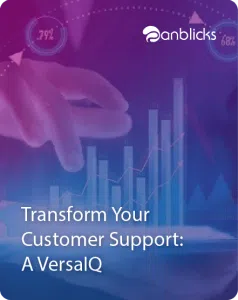
4 Machine Learning Platforms for Effective Predictive Analytics
Organizations are inundated with an overwhelming volume of documents daily, making it difficult to extract -critical information efficiently. The sheer quantity can overwhelm even the most organized enterprises, from contracts and invoices to reports and correspondence. Traditional document analysis methods, which often involve manual data entry and review, are time-consuming, error-prone, and inefficient. Fortunately, artificial intelligence (AI) has emerged as a powerful solution, revolutionizing the field of document analysis.
Predictive Analytics at the Forefront of Business Growth
Today almost every organization looks for predictive analytics capabilities. This results in the growing interest in technologies such as Big Data and artificial intelligence. According to some surveys, approximately 90% of companies believe predictive analytics is an essential asset for their business growth. However, there are only a few respondents who have put predictive analytics to the implementation. So how has predictive analytics become so demanding? What are the advantages it offers to your business? And, what are the best predictive analytics tools that can help your business stay ahead of the competition?
Now let’s have a look at some of the machine learning platforms that can help organizations to have effective predictive analytics for their business.
1. RapidMiner Studio
RapidMiner delivers a unique combination of data analytics and custom business development. The tool is known as code-optional; businesses can perform their task quickly with reusable codes. The essential feature of this predictive analytics tool is that it allows the organizations to automate the reporting process based on time, or channels, which can be triggered using a user-friendly dashboard. The tool enables businesses to import their data sets to the existing environment and export the same data sets to other programs using its 60+ native integrations.
2. Databricks Machine Learning Runtime
Databricks’ MLFlow is an open source machine learning platform that allows organizations to monitor and manage the entire machine learning lifecycles. The platform allows the organizations to run experiments with any ML library, framework or language, and automatically keep track of parameters, metrics, code and models from each eexperiment. Moreover, it also allows businesses to discover, and move the machine learning models such as predictive analytics from experimenting to online testing and production.
3. Microsoft Azure Machine Learning
Azure Machine Learning is a cloud platform that allows developers to build, train, and deploy AI and predictive analytics models. Microsoft is persistently making improvements to its machine learning platform to allow the platform to add new functionalities and features. The company has recently announced changes to Azure Machine Learning. These changes include, open data sets, improved visual interface, automated ML-UX, and Data Box with FPGA.
4. Jupyter Notebook
Jupyter notebook is one of the most extensively used open-source machine learning platforms globally. The platform provides speed and accuracy in terms of processing and data monitoring. Since the platform supports three languages viz. Julia, Python, and R, it becomes easy for data scientists to create predictive analytics models from the data collected from various sources. Moreover, the platform allows the users to store and share live codes in the form of notebooks.
Let’s have a look at the questions mentioned above;
How Predictive Analytics has Become a Must-to-Have Functionality for Organizations?
According to a report by Allied Market Research, the predictive analytics market was estimated to be around US$ 7.32 billion in 2019. This market is projected to surpass the value of US$ 35.45 billion by the end of 2027. The report also states that the market is projected to witness a 21.9% CAGR during the forecast period of 2020 to 2027. The market’s growth is the attribute of raising awareness of the large data volume amongst the organizations. Moreover, the race of gathering, processing, and monitoring the data to deduce a sustainable outcome for the customer has led to the growth in the demand for predictive analytics in various organizations.
What are the Advantages of Using Predictive Analytics?
1. Avoids Customer Rotation and Reduce Customer Churn
Predictive analytics allows organizations to create customer segments about loss risks. The segment includes both major and minor risks. Once the segments are made, the data engineers can apply corrective actions promptly that can reduce the dissatisfaction among the customers and further diminish the risk of customer churn.
2. Better Campaign Planning
The predictive analytics solutions allow the organizations to analyze the behavior, pattern, interactions, and web browsing of the customers. This allows the businesses to develop an actionable plan that helps them to attract more prospects. Moreover, the solutions also enable the companies to define the best time and channel to communicate with the customers, enhancing their campaigns’ effectiveness.
3. Improved Sales Probability
The solutions powered by predictive analytics help organizations segment their customers based on purchase probability. This, as a result, helps businesses to communicate with customers in different mediums efficiently. Predictive analytics suggests practical ways to attract customers and develop sales plans according to their purchase patterns.
4. Personalized Services
Long gone are the days when the one-size-fits-for-all approach worked for the businesses. Today, customers are looking for companies that can offer services that are oriented towards their requirements. Predictive analytics and other data platform management services allow companies to gather information about their customers’ expectations. This will enable them to treat their customers uniquely, providing a personalized customer experience. This, as a result, helps the businesses to generate better leads and gain more profit.
To Sum Up
The businesses have transformed their operations from old brick and mortars to digital landscapes. They are using new techniques and technologies that can attract more customers to their business. To achieve this task, the organizations implement predictive analytics to their operations to gain a competitive edge over their competitors.









